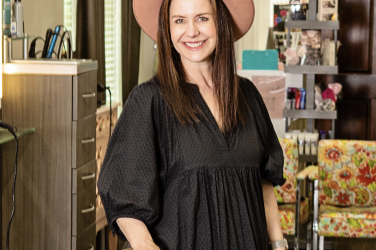
Q&A
I’ve Been Hearing A Lot About Bio-Identical Hormones. Can You Explain What They Are And How They Work?
Where conventional hormone therapy is often only available in one to two predetermined doses, bioidentical hormone therapy (BHRT) dosage can be tailored to your individual needs and lifestyle. Because bioidentical hormones look exactly like your naturally occurring hormones, they can enter your body, go directly to the receptor site, and achieve the desired results. Traditional synthetic hormones must be metabolized through the liver first, where they must convert to a different hormone and sometimes can cause the opposite effect than what’s desired. BHRT is administered through creams, patches, pills, or pellets.
Why Isn’t Bhrt More Readily Available?
Unfortunately, there was a study in 2002 which has since been discredited. This notorious study incorrectly asserted that hormones were dangerous for women. The primary investigators of the study have since walked back their findings, realizing they didn’t actually show bioidentical hormones to be dangerous for women at all. But the damage was done and many providers and patients have stayed away from hormone therapy due to this erroneous information.
What Are The Benefits Of BHRT?
BRHT can offer balanced mood, improved sleep, reduced brain fog, decreased hot flashes, decreased vaginal dryness, increased stamina and energy, increased muscle mass, decreased fat mass, increased libido, heart protection, bone protection, brain protection, and enhanced sexual response and desire.
How Soon Can I Expect Results?
This depends on the type of hormone therapy you’re using. You should start to notice a difference within 7-10 days of starting a new therapy. With pellet therapy, you should notice a larger difference around four to six weeks. Adjustments to the treatment plan must sometimes be made. I ask new patients to commit to two rounds of pellets before they feel optimal. Following up with necessary blood work and communicating with your practitioner is imperative to achieve the best possible results no matter which modality you choose.
How Often Will I Need Follow-Up Therapy?
We obtain initial lab testing, then test again in four to six weeks. The patient shouldn’t require labs again for another year unless we’re adjusting their dose. Most male patients need pellet therapy every four to six months. Most female patients need pellet therapy every three to five months.
How Much Should I Expect To Pay?
Pellet therapy for women is $350 every three to five months. For men it ranges between $650 and $750 every four to six months. Consults and labs can be billed to insurance.
What About Thyroid Management?
Thyroid health is imperative to overall health status. Unfortunately, most practitioners only look at your TSH (Thyroid Stimulating Hormone). TSH doesn’t give the full picture of thyroid status and looking at the Free T3 and Free T4 is necessary as well as looking at antibodies against the thyroid to determine if the patient has any autoimmune dysfunction causing the thyroid problem.
Patients with low thyroid symptoms can have labs that appear normal. Thyroid is involved in multiple aspects of health, including metabolism, temperature regulation, mood, and cardiac function, so finding a provider who will look at the whole picture is extremely important.
About The Expert

Kylie Bunner, DNP, APRN, FNP-C
Institute for Hormonal Balance
Dr. Kylie Bunner earned her Master of Science degree and completed the family nurse practitioner program at Texas Woman’s University. She went on to earn her Doctor of Nursing Practice degree from the University of Alabama. She is board certified by the American Academy of Nurse Practitioners.










